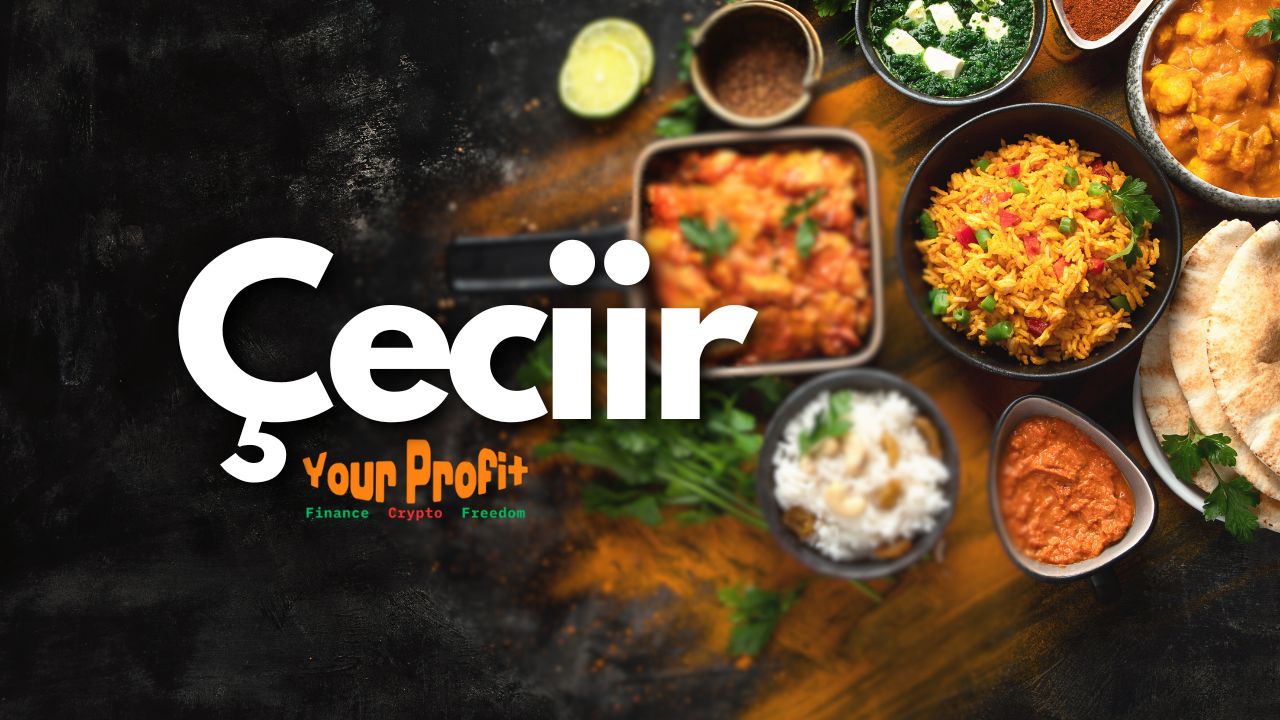The Soul of Turkey on a Plate: Çeciir
In every spoonful of Çeciir, there’s a story. It’s a tale of resilience, community, and warmth—a comfort food that quietly holds centuries of Turkish heritage. Çeciir, pronounced cheh-jeer, isn’t just a humble dish made from chickpeas; it’s the very soul of Anatolian kitchens, where simplicity and sincerity rule the hearth.
What is Çeciir?
Çeciir is a traditional Turkish legume dish, primarily made from chickpeas, slow-cooked with aromatic herbs and spices. The name itself is derived from an older Turkish word for chickpeas. This rustic dish is deeply rooted in rural Anatolian life, where every meal was an act of love and sustenance.
Often served during communal gatherings or special occasions, Çeciir represents the Turkish spirit of hospitality. It is comforting, hearty, and packed with flavor—exactly what you’d expect from a culture that treasures shared meals.
A Glimpse into Turkish Culinary Heritage
Turkish cuisine is a rich tapestry woven from influences across Central Asia, the Middle East, and the Mediterranean. Among its most cherished staples are legumes—affordable, nutritious, and versatile. Chickpeas, in particular, have long been a kitchen favorite. In ancient Anatolia, villagers used them in everything from soups to stews to steamy, oven-baked pots.
Çeciir finds its place right here—in the lineage of homegrown recipes passed down from grandmother to grandchild, often without a single word written.
Ingredients that Speak Tradition
At its core, Çeciir uses:
-
Chickpeas (preferably dried and soaked overnight)
-
Onions
-
Garlic
-
Tomato paste or fresh tomatoes
-
Olive oil or clarified butter (depending on the region)
-
Paprika, black pepper, and thyme
-
Occasional additions like green peppers or bulgur
Local variations abound, and families often adapt the recipe to match the seasons or personal taste.
How Çeciir is Made
The process is unhurried, a celebration of patience. First, chickpeas are soaked, then simmered slowly with sautéed onions and tomato paste. Spices are added in stages to develop a deep, complex flavor. Some prefer to use an earthenware pot, letting the dish cook over embers for hours.
In eastern Turkey, Çeciir might include spicy pepper paste for extra heat. In Aegean regions, a touch of lemon juice or fresh parsley adds brightness.
A Flavor Profile Like No Other
Çeciir is earthy, mildly tangy, and richly savory. The chickpeas are soft but intact, bathing in a velvety, spiced broth. Every bite is a balance—between creamy and chunky, light and hearty. It’s comfort food that never overwhelms but always satisfies.
When and How It’s Served
Traditionally served warm in shallow bowls, Çeciir is perfect with crusty village bread or fluffy Turkish rice. It often accompanies meze platters or acts as a standalone dish during simple family lunches.
Special occasions like Ramadan iftar or village festivals are prime times for Çeciir, where it’s offered generously to guests and neighbors.
Çeciir in the Modern Turkish Kitchen
Contemporary Turkish chefs have begun reimagining Çeciir. You’ll find it topped with roasted vegetables, served alongside quinoa, or even pureed into a thick dip. Yet, despite the innovation, the heart of the dish remains the same: a celebration of tradition.
Health Benefits of Çeciir
Packed with protein, fiber, iron, and plant-based goodness, Çeciir is more than delicious—it’s nourishing. It supports digestion, keeps you full longer, and is heart-friendly thanks to its low fat content and complex carbs.
Çeciir vs. Other Legume Dishes
You might wonder how Çeciir differs from dishes like hummus or ful medames. Unlike those, Çeciir is a whole bean dish—not mashed or overly creamy. It stands out with its brothy base and deeply layered flavors unique to Turkish seasoning.
The Ritual of Sharing
Çeciir is rarely eaten alone. It’s served at gatherings, on long tables, and with multiple hands reaching for bread and pickles. This communal spirit echoes the Turkish value of “sofra”—a sacred table space for connection.
Çeciir in Turkish Literature and Media
From folk songs to novels, food is often a metaphor in Turkish storytelling. Çeciir appears in stories of migration, resilience, and nostalgia—symbolizing home and the irreplaceable taste of childhood.
Cooking Tips for First-Timers
-
Soak your chickpeas overnight to ensure tenderness.
-
Use fresh, quality spices—they make all the difference.
-
Don’t rush the cooking time. Low and slow wins the race.
-
Finish with a drizzle of olive oil and a sprinkle of sumac or fresh parsley.
Pairing Çeciir with Other Delights
Perfect partners for Çeciir include:
-
Bazlama (Turkish flatbread)
-
Pickled vegetables
-
Ayran (yogurt drink)
-
Roasted eggplant salad
These flavors dance together on the table, enhancing every bite.
Where to Find Authentic Çeciir Today
While many homes still prepare Çeciir, a few eateries specialize in reviving such heritage dishes. Places like Çiya Sofrası in Istanbul are keeping these recipes alive for modern palates.
Recipes Passed Down Generations
“My grandmother used to make Çeciir in a clay pot, leaving it to cook slowly while she worked in the garden,” says Hatice, a home cook from Konya. Today, her children continue the tradition every Bayram.
Why Çeciir Captures the Soul of Turkey
In its humble ingredients, slow preparation, and communal consumption, Çeciir embodies what Turkish cuisine is all about: nourishment, care, and a deep respect for tradition.
Çeciir as a Symbol of Resilience
Throughout Turkish history, particularly in rural Anatolia, food scarcity and hard winters were common. Dishes like Çeciir weren’t born out of abundance, but out of creativity, survival, and heart. Chickpeas could be stored for months, and even when meat was a luxury, legumes provided the protein families needed.
Çeciir became a symbol of endurance. It’s not just food—it’s the proof that a dish doesn’t have to be extravagant to be deeply meaningful.
Children and Çeciir: A Taste of Home
For many Turkish children, Çeciir was among the first solid meals they tried. Soft chickpeas, flavored just enough to entice a young palate, made it ideal for all ages. Many adults now living abroad recall Çeciir as the dish that brings them back to their mother’s kitchen, to warm afternoons after school, to the safety of being fed with love.
In that sense, Çeciir is more than nostalgia—it’s edible memory.
Reviving Lost Recipes Through Çeciir
In recent years, Turkish food historians and chefs have begun compiling and publishing regional cookbooks to preserve endangered recipes. Çeciir often features prominently, as both a cultural artifact and a delicious entry point for learning about Anatolia’s past.
Some regional versions nearly vanished but are now making a comeback—like Çeciir with nettles from Black Sea villages or the spicy Diyarbakır version enriched with bone broth and wild herbs.
Teaching the Younger Generation
Workshops and culinary schools in Turkey now include traditional dishes like Çeciir in their curriculum. Young chefs are taught to respect slow food and to see value in simplicity. The idea is to connect modern gastronomy with ancestral wisdom—making sure Çeciir isn’t just remembered but also recreated and reimagined with integrity.
Making Çeciir Your Own: A Simple Home Recipe
Here’s a simplified version you can try at home:
Quick Çeciir Recipe
Ingredients:
-
2 cups dried chickpeas (or 3 cups canned)
-
1 onion, finely chopped
-
2 cloves garlic, minced
-
1 tablespoon tomato paste
-
1 teaspoon paprika
-
Salt, pepper, thyme to taste
-
Olive oil
-
Optional: 1 chopped green pepper
Instructions:
-
If using dried chickpeas, soak overnight and boil until tender.
-
In a pot, sauté onions and garlic in olive oil until golden.
-
Add tomato paste, spices, and chickpeas.
-
Cover with water or broth and let simmer for 20–30 minutes.
-
Serve with a drizzle of olive oil and a squeeze of lemon.
It’s easy, budget-friendly, and oh-so-satisfying.
Frequently Asked Questions
1. Is Çeciir vegetarian or vegan?
Yes! Traditional Çeciir is completely plant-based, though some regions might add meat or broth for richer versions.
2. Can I use canned chickpeas?
Absolutely. While dried chickpeas offer better texture, canned ones are a quicker alternative.
3. What’s the best way to store Çeciir?
It stores well in the fridge for 3–4 days. In fact, it often tastes better the next day as the flavors meld.
4. Is Çeciir spicy?
Not typically, but you can adjust the heat with red pepper flakes or spicy paste.
5. Can Çeciir be frozen?
Yes, it freezes well. Just avoid freezing it with added garnishes.
6. Is Çeciir gluten-free?
Yes—unless it’s served with bread, the dish itself contains no gluten.
Conclusion: More Than Just a Dish
Çeciir is living proof that food doesn’t need extravagance to matter. It is a modest dish, yet in its steam and spices, it carries the soul of a people who cherish connection, memory, and nourishment.
Next time you savor a bowl of Çeciir, remember—you’re tasting centuries of Turkish history, a family’s tradition, and the quiet strength of a culture that finds beauty in simplicity.







